How Islamic Architecture Can Spark a Cultural Renaissance
Why Rebuilding Beautiful Cities Is Key to Restoring Our Identity
When was the last time a building made you feel something?
Not just a casual glance, but something deeper.
Something that reminded you of who you are and where you come from.
For me, it’s been a while. And the more I travel through Muslim countries, the more this question nags at me.
There’s a disconnect.
The cities, the buildings—they don’t speak to us anymore. They don’t reflect our history, values, or identity. More than modernity, it’s about losing touch with what makes us, us.
And if we want to reclaim our identity, we need to start with our foundations.
Literally.
Our architecture.
Let’s explore why reintroducing beautiful Islamic architecture could be the key to revamping Muslim countries and sparking a cultural renaissance.
So, what went wrong?
It’s easy to blame modernity. Skyscrapers, concrete blocks, soulless glass towers—they’re everywhere.
But the real damage started when colonial powers left Muslim countries with an identity crisis.
Colonization wasn’t just about taking resources. It stripped away our sense of self.
In a rush to modernize, many cities abandoned their Islamic roots. The architecture that once made Muslim towns vibrant and distinct was pushed aside for “progress.”
What did we end up with? Buildings that could be dropped into any country in the world and no one would bat an eye.
They don’t tell a story.
They don’t reflect our past.
They’re just… there.
This issue runs way deeper than ugly buildings.
After nearly three centuries of colonization, Muslim nations were left with an inferiority complex.
We forgot the greatness of our heritage, the architectural marvels that once reflected the sophistication of our culture.
Instead of preserving what was ours, we mimicked the West—thinking that concrete jungles and glass skyscrapers would make us “modern.” But in doing so, we lost ourselves.
Look around.
How many buildings in your city actually feel like they belong to a Muslim country? How many mosques, homes, or government buildings remind you of the architectural marvels of the past?
My guess is, not many.
Let’s pause for a moment. Think about the Alhambra in Spain. Or the Blue Mosque in Turkey. What do you feel when you see those structures?
Awe?
A sense of belonging?
That’s not a coincidence.
Islamic architecture is known for its geometric patterns, intricate calligraphy, domes, arches, and courtyards.
More than being decorative, they held deep spiritual and cultural meaning.
For example, courtyards were designed for reflection and community life. The four-iwan courtyard—a central courtyard surrounded by four grand arched halls—was a classic example of how Islamic architecture balanced beauty and function. The iwan style, found in places like the Great Mosque of Isfahan, elevated the experience of moving through a space, directing you toward a sense of the divine.
Geometric patterns symbolized the infinity and order of Allah’s (SWT) creation.
You see this everywhere, from the tiles of the Alhambra, to the intricate inlay of the Taj Mahal. These designs represented the unchanging truth of divine harmony.
When you walk through a space adorned with these patterns, you’re reminded of God’s presence.
But today?
Walk through any major Muslim city, and you’ll find a chaotic mix of styles. A glass tower next to a concrete block, and maybe something vaguely traditional.
There’s no cohesion.
No sense of purpose.
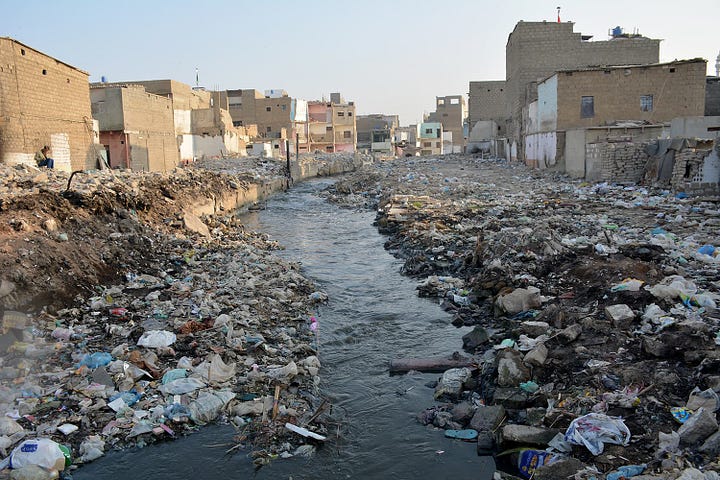
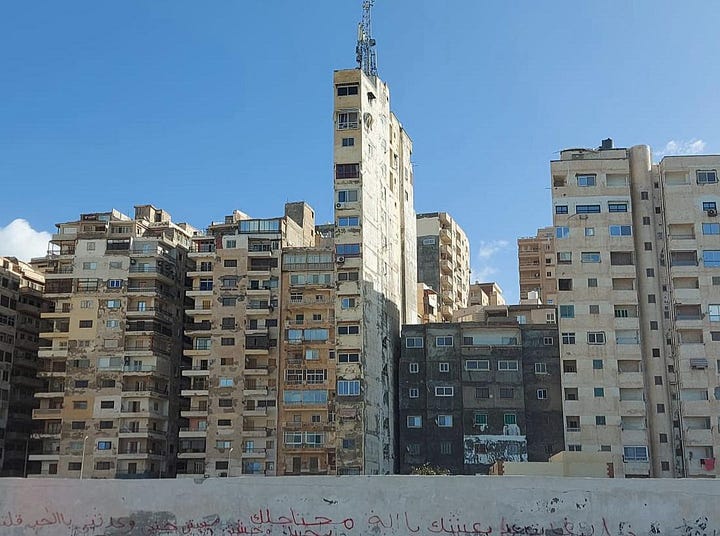
And let’s be honest: modern cities in the Muslim world, especially places like Karachi (where I currently study), are full of filth.
I’m not talking about the crumbling, soulless buildings.
I’m talking about actual filth.
Stray dogs, garbage piles, broken roads, and stray dogs on top of the garbage piles. At some point, you stop dodging potholes and start wondering if you’re navigating a war zone or just trying to get to the grocery store.
It’s hard to feel a connection to a place when you’re constantly trying to avoid stepping on… well, let’s just call it “organic street material.”
Historically, Muslims placed immense importance on architecture as a reflection and extension of their belief system.
Take Baghdad during the Abbasid Caliphate.
Designed as a “round city,” it was a masterpiece of planning and symmetry, with the caliph’s palace and mosque at its center. It symbolized the caliph’s role as both a temporal and spiritual leader, with everything radiating from the faith’s center.
Look at the Moorish architecture in Spain, especially in cities like Granada and Cordoba.
These cities were home to breathtakingly intricate palaces like the Alhambra and the Mezquita of Cordoba, both of which combined Roman, Gothic, and Islamic elements to create structures that still inspire awe centuries later. The Mezquita’s fusion of the Islamic horseshoe arch with red-and-white brick created an unforgettable visual experience.
Even in the Ottoman Empire, the sultans were patrons of monumental architecture.
Mimar Sinan, the chief architect of the Ottomans, designed masterpieces like the Süleymaniye Mosque and the Selimiye Mosque. His designs balanced massive domes with slender minarets, creating spaces that were both grand and serene, encouraging worshippers to feel the majesty of God’s creation.
These structures expressed the Muslim community’s values, faith, and place in the world.
Architecture has always been a marker of successful civilizations.
The splendor of their buildings mirrored the strength of their empires. When you think of great empires, from the Romans to the Ottomans, their architectural achievements are inseparable from their legacy.
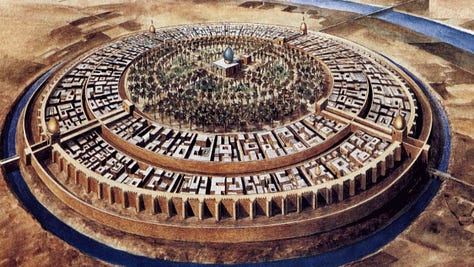
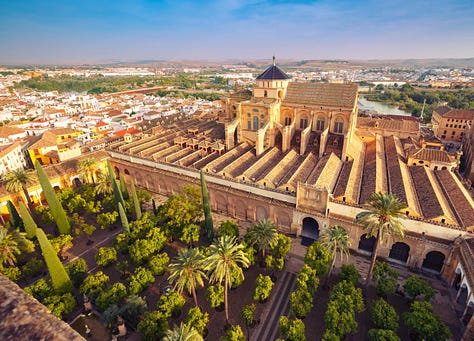
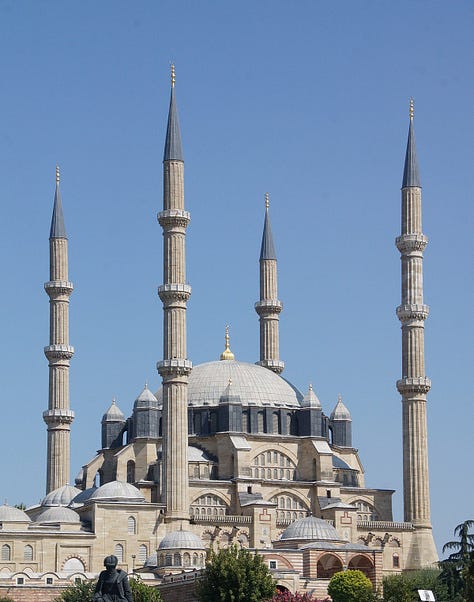
Let me ask you something:
If you were walking through a city filled with stunning architecture—mosques with intricate domes, homes with shaded courtyards, public spaces designed for reflection—how would you feel?
Pride? Connection? Inspiration?
Revamping architecture is a powerful tool to rekindle our cultural identities. When people see their culture and faith reflected in their surroundings, it deepens their sense of belonging.
It reminds them that they’re part of something bigger.
Then there’s the spiritual aspect.
Islamic architecture was designed to lift our hearts and remind us of the divine.
The muqarnas—a form of honeycomb vaulting seen in the Alhambra and Masjid-i Jameh of Isfahan—is more than decoration. It’s a visual representation of the journey from the earthly to the heavenly.
Finally, there’s the practical side.
Beautiful architecture draws people in.
Think of places like the Sheikh Zayed Mosque in Abu Dhabi or the King Abdullah Petroleum Studies and Research Center in Riyadh. The Museum of Islamic Art in Doha—designed by architect I.M. Pei—blends modernity and tradition.
These places make people feel.
So, how do we bring back the beauty we’ve lost?
1. Rediscover the Old
First, we need to rediscover what we’ve left behind by visiting preserved cities and studying history. Cities like Fez, Isfahan, and Istanbul preserve their heritage. We need to learn from them and recreate that in a modern context.
2. Re-educate Our Architects
Our architects need to be trained in the principles of Islamic architecture. It’s not enough to throw a dome on top of a building and call it Islamic. Universities should offer courses on the spiritual, cultural, and functional elements of Islamic design.
3. Blend Tradition with Modernity
We don’t have to reject modernity. Buildings like the Sheikh Zayed Mosque or the King Abdullah Petroleum Studies and Research Center show that we can move forward without leaving our roots behind.
4. Push for Government Support
Governments play a huge role in shaping our cities. They need to prioritize rebuilding with Islamic architecture in mind as part of national identity-building efforts.
Here’s an ideal future:
Muslim countries, filled with cities that reflect their heritage and faith.
Buildings that aren’t just functional but beautiful.
Mosques that lift our spirits, homes that ground our families, and public spaces that bring communities together.
We don’t have to go back in time to make this happen.
But we do need to look back, rediscover what we’ve lost, and build something better.
Something that reflects who we truly are.
The next time you walk through your city, take a moment to look around.
What do you see?
What do you want to see?
Because if we want to revamp ourselves as nations, it starts with the buildings that shape us.




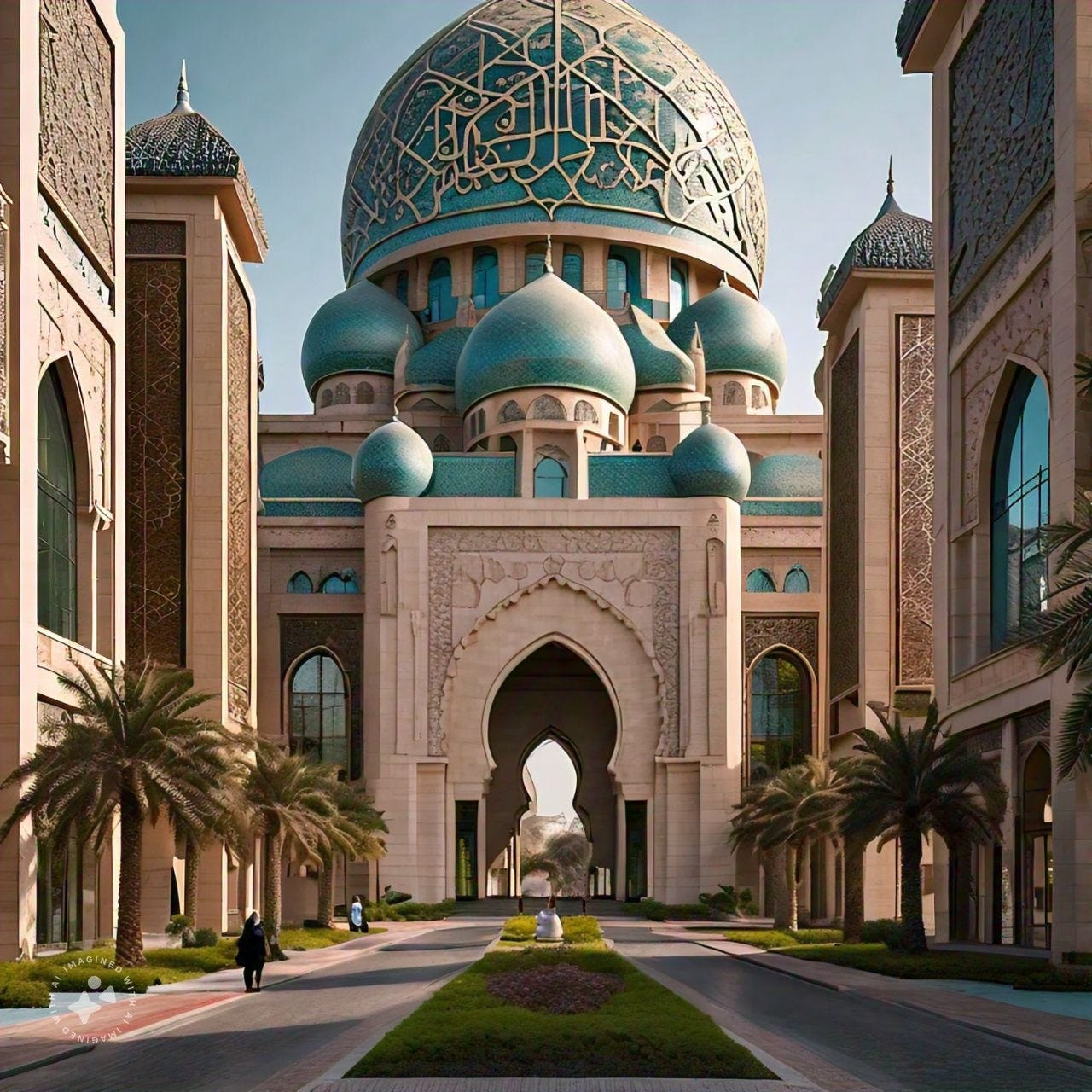

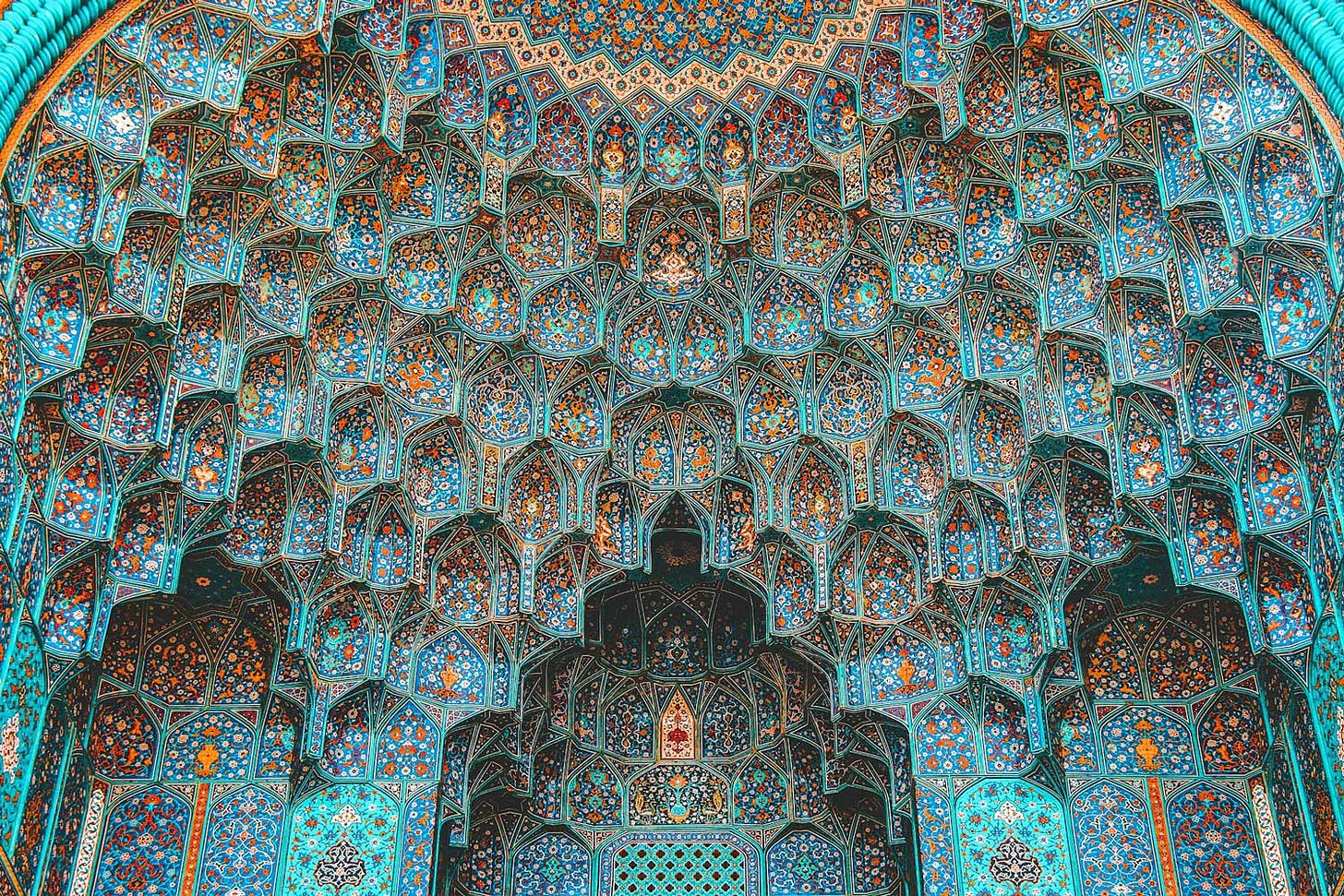
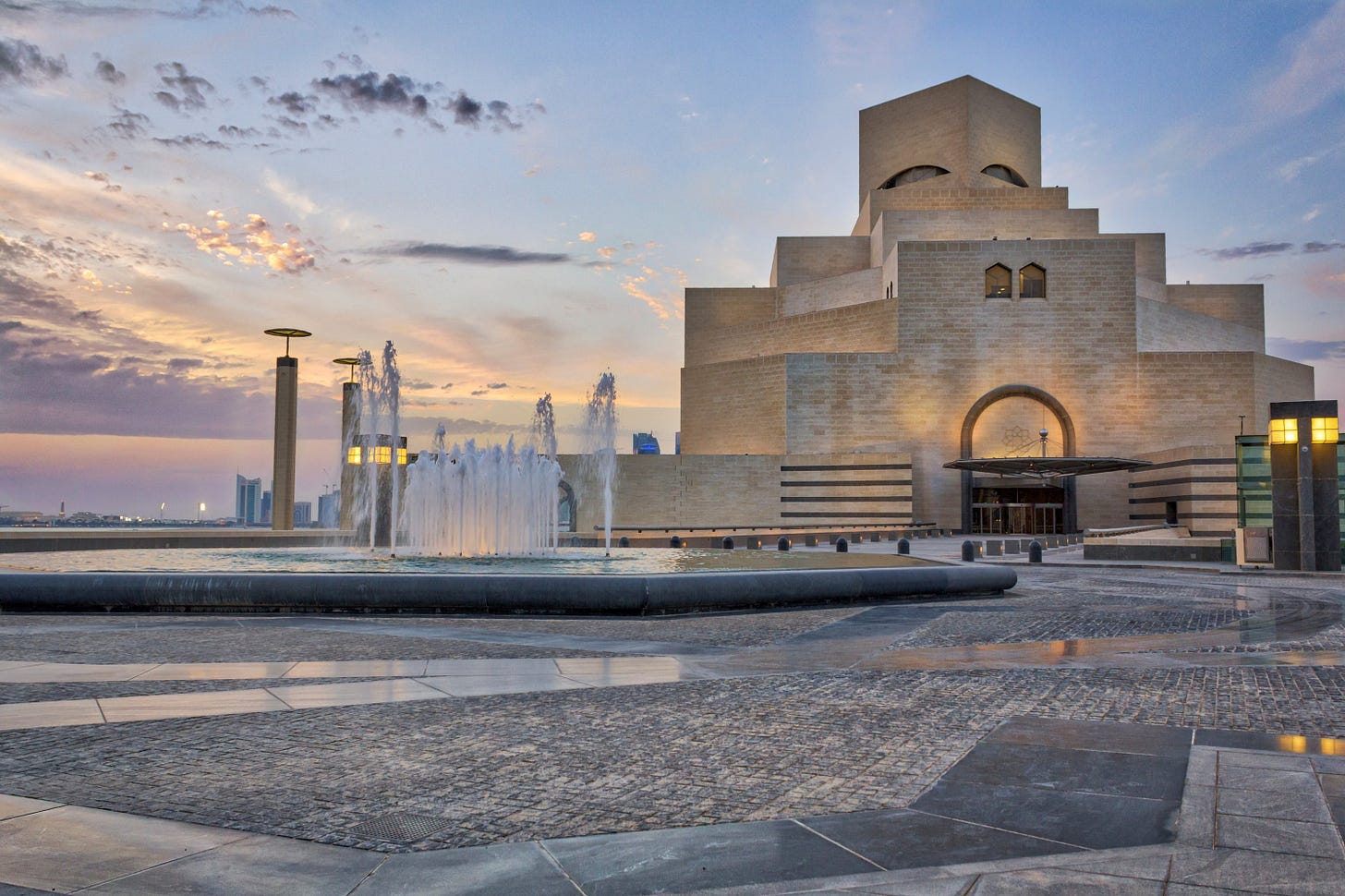
These type of "ugly" and "generic" architecture îs found in a lot of southern countries, and not only the Muslim ones. The Karachi buildings in the photo you choose could as well be found in Spain, Italy or Greece.
In a different "ugly" style, I can also cite my hometown of Caen (France). The town was almost completely destroyed by Allies bombing on D-Day, and in the following years, was rebuilt as fast as possible with no consideration for esthetics, only "craming as much people as possible in the smallest possible space". And it is only when I left for another town, and later came back for holidays, that I realize the ugliness I had had in front of my own eyes for all my life.
I love Muslim architecture, and I hope to visit Samarkand one day 🙂.
I really feel the sentiments expressed in this piece of yours, having experienced some of the disconnect in my previous travels. However, there are also, surprisingly, a fair amount of places in areas which haven’t perhaps seen much of the vast wealth that came with oil money, that still reflect traditional architecture or more recent architecture that honours the symbolism and intellect embedded in the traditional. I don’t know if this will last, but I have my hopes that there are those who respect the depth of the past in their contemporary renditions. And there are also, of course modern monstrosities such as the massive eyesore and offensive architecture (if you can call it architecture) of the clock tower buildings that now deface the landscape of Mecca - but that’s another story.